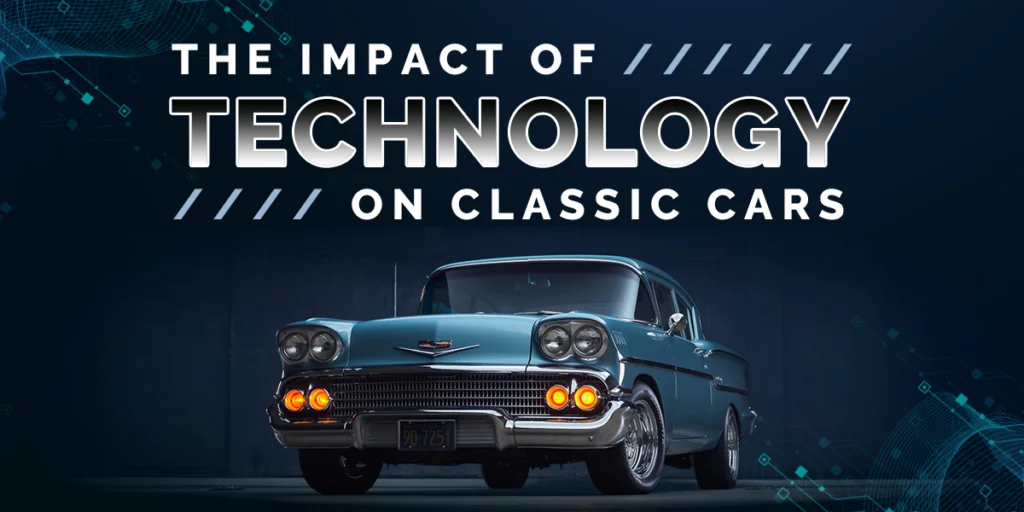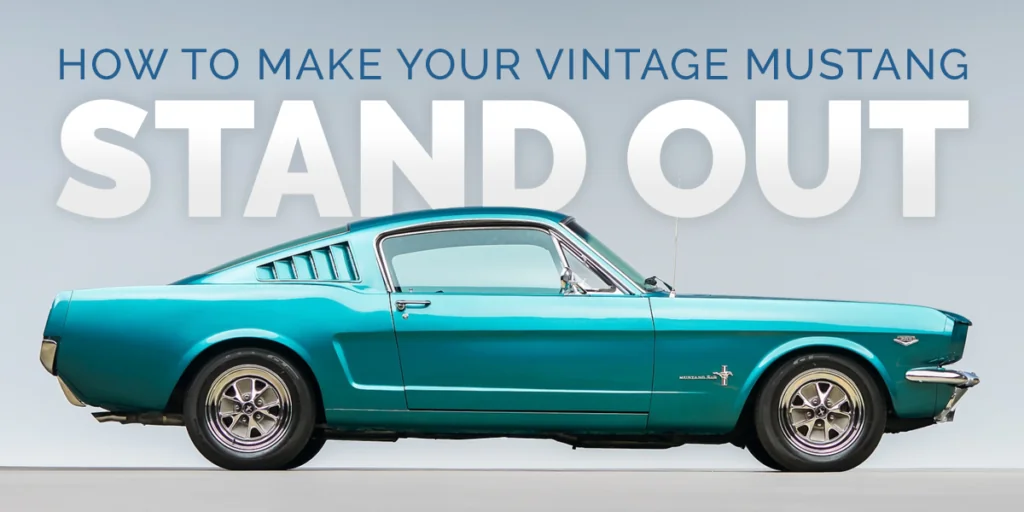It seems likely that people have been arguing about the usefulness of new technology in hobbies since the days when “new technology” meant a spear and the “hobby” in question was mammoth hunting. (“Can’t we just keep throwing rocks at them, like we used to?”) Car collecting is no exception to this rule. Whether we are discussing radial tires vs. bias-ply, modern audio systems in vintage cars, or classic car restoration techniques, there are always two schools of thought.
Allow us to make a few arguments on behalf of using technology to enhance our hobby, making classic car ownership more rewarding than ever before. As you’ll see, there’s more than one kind of technology that can be effectively applied to restoring and upgrading vintage cars.
Best Modern Upgrades for Classic Cars

After all, every car ever built is an example of automotive technology being put to good use. It’s not always about having the latest and greatest—Morgans, for example, have won races and provided joy to enthusiasts despite their “obsolete” ash frames. (Fun fact: Post-1986 models treated with Cuprisol preservative are incredibly resistant to rot.) That’s a great example of technology preserving classic cars.
Other legendary innovations include the flathead Ford engine, PowerGlide transmission, Posi-Traction, and Corvette’s transverse fiberglass leaf springs. Every feature we now cherish was once a brand-new idea.
No doubt that’s why plenty of enthusiasts embrace modern classic car upgrades. Today’s tires are safer, brake pads are more effective, and synthetic motor oils last longer. You’ll also find LED lighting kits for classic cars, GPS-capable vintage radios, high-output alternators, and even computer-controlled air suspension for a smoother ride.
Just going through the best upgrades for a Model T can keep you busy for hours. Hydraulic brakes? A must. Pressure lubrication for the crank? Absolutely. Then there’s the legendary “Model T GT,” a Frankenstein creation with a 5.0-liter Mustang V8 and five-speed transmission, proving how well modern performance tech works with vintage engineering.
Of course, concours purists may prefer factory-original setups, but for everyone else, there’s plenty of room to enjoy the best of both worlds.
How 3D Printing and CNC Tech Are Preserving Classic Cars

Some enthusiasts are using modern technology to restore vintage cars without altering their originality. Thanks to laser scanning, 3D printing, and CNC machining, rare and discontinued parts can be recreated with precision.
A great example? Jay Leno’s 1913 Packard restoration. After a serious engine failure, he used 3D scanning and metal casting to reproduce an unavailable cylinder. Before these technologies, his only option would have been a costly, time-consuming attempt to replicate Packard’s original manufacturing process.
Shops like Zakira’s Garage in Ohio specialize in vintage race car restoration, using period-correct blueprints to recreate parts that haven’t been manufactured in decades. It’s like using automotive DNA to bring history back to life—without the Jurassic Park consequences.
How Online Communities and Resources Benefit Classic Car Owners

We’d be remiss if we didn’t discuss the tremendous positive impact that the Internet has had on the collector car hobby. It’s taken information that was often hidden in rare books or a few fading memories and put it out for the entire world to see, use, and add to. If you own a collector car, there’s a good chance you’ve used the internet more than once for diagnosis, troubleshooting, advice, and how-to steps. It’s common for online collector communities to develop and share key fixes and remedies; a few decades ago, those valuable tips would live somewhere in the space between “rumor” and “nonexistent”.
Getting new parts is also much easier than it was in 1990. Every catalog is now at your fingertips, making it simple to compare pricing, and access detailed information about each part. Most of us are glad to see the tiny and often generic-looking line drawings found in old catalogs replaced by actual hi-definition photographs of the item in question. Just as importantly, a website can be corrected in a way that is impossible with a mailed-out catalog. Not to mention the idea of knowing if the part you want, or need is in stock!
And when it’s time to install those parts, aren’t you glad to have full-length videos at hand instead of a few cryptic instructions that usually ended with “installation is the reverse of removal”? Even the poorly made videos are useful, because they reassure us that we’re not the first shade-tree mechanic in history to cross-thread a bolt or drop a washer down an engine intake. As the old saying goes, “Sometimes the most you can hope for is to serve as an example to others.”
A lot of collectors also use the Internet to keep their passions alive. Seeing someone else’s project car run for the first time, or watching a time-lapse assembly, can go a long way towards motivating us to stay involved and enthusiastic about our own projects and collections. We get ideas from seeing how other people have solved problems or enhanced their own enjoyment, and we’re often eager to share the same kind of motivating content back to them. Sometimes, in the middle of winter, it’s nice to know that you’re not the only person rebuilding a Stromberg carburetor.
The Technology of American Collectors Insurance
When it comes to putting technology to work for collector car owners, we’re right at the leading edge. The American Collectors website allows you to check eligibility, get rate quotes, start your process of insuring a new vehicle, and make changes to your existing policy. We even have an online valuation tool available so you can make smart decisions about buying and selling a collector car.
We also have an online community for car enthusiasts – which is where you are now – offering all sorts of helpful information and great classic stories about our shared hobby. We share our customer reviews so you can get facts from the source, and we offer a complete glossary of collector and classic car terms. We provide an events calendar with links available for the car clubs nearest to you.
We’re committed to using technology to make your insurance experience better, and we hope you’ll join us for the ride.



